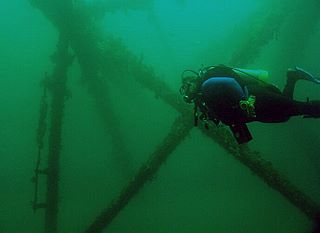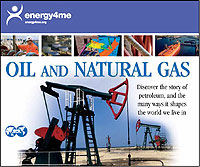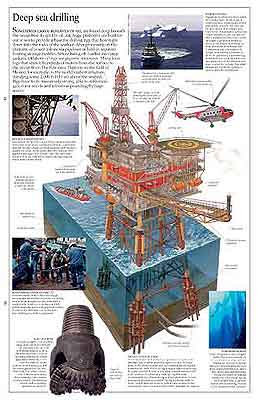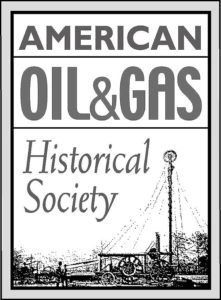by Bruce Wells | Jun 28, 2025 | Petroleum in War
Navy admirals reluctantly switched from coal to oil — adding engine power and simplifying resupply.
Commissioned on March 12, 1914, the USS Texas was the last American battleship built using engines with coal-fired boilers. Converted to burn fuel oil in 1925, the “Mighty T” became even more dominant at sea during the worldwide maritime change from coal to oil power.
When the Industrial Revolution ended the “Age of Sail,” supplies of coal that fired the boilers of steam-powered ships became a strategic resource. Worldwide “coaling stations” were essential at a time when oil was used as an axle grease or resource for making lamp kerosene. (more…)
by Bruce Wells | Apr 23, 2025 | Offshore History
Thomas Rowland’s Continental Iron Works produced gas fittings, welded oil storage tanks, and a famous ironclad.
The origins of the modern offshore oil exploration and production industry must include the 1869 offshore rig patent “Rock Drill” design of a skilled New York engineer.
On May 4, 1869, Thomas Fitch Rowland, owner of Continental Iron Works in Greenpoint, New York, received a U.S. patent for an unusual “submarine drilling apparatus.” His patent (No. 89,794) for a fixed, offshore drilling platform came just 10 years after America’s first commercial oil discovery in Titusville, Pennsylvania.
(more…)
by Bruce Wells | Feb 28, 2025 | Offshore History
Thousands of offshore petroleum structures provide energy — and marine habitats.
Offshore petroleum platforms act as artificial reefs, creating important marine habitats, according to scientists. Beginning with an Exxon experimental subsea structure in 1979, the U.S. government’s “Rigs to Reefs” program established the largest artificial habitat in the world.
The Gulf of Mexico, both onshore and offshore, has continued to be a key contributor to U.S. oil and natural gas resources and energy infrastructure. Federal offshore oil production in 2023 accounted for 15 percent of total U.S. crude oil and five percent of natural gas production, according to the U.S. Energy Information Administration (EIA).

Offshore platforms make good artificial reefs. The open design attracts fish — and divers — where they can swim easily through the circulating water. Photo courtesy U.S. Bureau of Safety and Environmental Enforcement.
(more…)
by Bruce Wells | Jan 22, 2025 | Offshore History
Exploring the 1969 offshore disaster and the geology of ancient natural petroleum seeps.
A 1969 oil spill from a California offshore platform transformed the public’s view of the U.S. petroleum industry and helped launch the modern environmental movement — and the Environmental Protection Agency. Ancient natural seeps continue to produce thousands of tons of oil every day.
On January 28, 1969, after drilling 3,500 feet below the ocean floor, a Union Oil Company drilling platform six miles off Santa Barbara, suffered a blowout. Between 80,000 and 100,000 barrels of oil flowed into the Pacific Ocean and onto beaches, including at Summerland, where the U.S. offshore industry began in 1896 with drilling on oil well piers. (more…)
by Bruce Wells | Feb 1, 2019 | Energy Education Resources
Readable energy education resources from the Society of Petroleum Engineers.
“Oil and Natural Gas is SPE’s fun, colorfully illustrated, and information-filled book on the history and uses of oil. This hardbound book is appealing to kids of all ages and adults! Currently available in Arabic, Chinese, English, French, Russian, Spanish and Portuguese.” – Energy4me
 Detailed illustrations tell the story of the industry’s heritage in Oil and Natural Gas – a book from the Society of Petroleum Engineers. Best of all, it can be downloaded for free, thanks to Energy4me.
Detailed illustrations tell the story of the industry’s heritage in Oil and Natural Gas – a book from the Society of Petroleum Engineers. Best of all, it can be downloaded for free, thanks to Energy4me.
Discovering the story of petroleum – and the many ways it shapes the world – is the theme of this illustrated guide to the industry’s past, present and future.
“Our world is ruled by oil. People have used oil for thousands of years, but in the last century we have begun to consume it in vast quantities,” begins the first chapter, which explains one of the world’s largest and most complex industries.
 Oil and Natural Gas is an educational book specifically targeted for students. The book, adapted for SPE from a 2007 edition by DK Publishing, London, features such topics as ancient oil, oil for light, natural gas, deepwater technology, piped oil, refineries, global oil, electricity, oil substitutes, and job opportunities.
Oil and Natural Gas is an educational book specifically targeted for students. The book, adapted for SPE from a 2007 edition by DK Publishing, London, features such topics as ancient oil, oil for light, natural gas, deepwater technology, piped oil, refineries, global oil, electricity, oil substitutes, and job opportunities.
In 74 pages, the hardbound edition offers young people a surprisingly comprehensive introduction to the history and many uses of oil. Detailed illustrations tell much of the story.
With more than 79,000 members in 110 countries, SPE shares technical knowledge about the upstream oil and natural gas industry. The society’s energy education website is for students, teachers.

Oil and Natural Gas is available at the “essential energy education” SPE website Enery4me, designed to help Americans become more educated energy consumers. SPE members are available to make presentations at a schools — and can provide copies of the book for the library or classroom.
_______________________________
AOGHS.ORG welcomes sponsors to help us preserve petroleum history. Please support this energy education website with a donation. Contact bawells@aoghs.org for membership information. © 2020 Bruce A. Wells.
Citation Information: Article Title: Legend of “Story of Petroleum.” Author: Aoghs.org Editors. Website Name: American Oil & Gas Historical Society. URL: https://aoghs.org/energy-education-resources/spe-story-of-petroleum. Last Updated: December 8, 2020. Original Published Date: June 1, 2005.


 Detailed illustrations tell the story of the industry’s heritage in Oil and Natural Gas – a book from the Society of Petroleum Engineers. Best of all, it can be downloaded for free, thanks to
Detailed illustrations tell the story of the industry’s heritage in Oil and Natural Gas – a book from the Society of Petroleum Engineers. Best of all, it can be downloaded for free, thanks to  Oil and Natural Gas is an educational book specifically targeted for students. The book, adapted for SPE from a 2007 edition by DK Publishing, London, features such topics as ancient oil, oil for light, natural gas, deepwater technology, piped oil, refineries, global oil, electricity, oil substitutes, and job opportunities.
Oil and Natural Gas is an educational book specifically targeted for students. The book, adapted for SPE from a 2007 edition by DK Publishing, London, features such topics as ancient oil, oil for light, natural gas, deepwater technology, piped oil, refineries, global oil, electricity, oil substitutes, and job opportunities.
